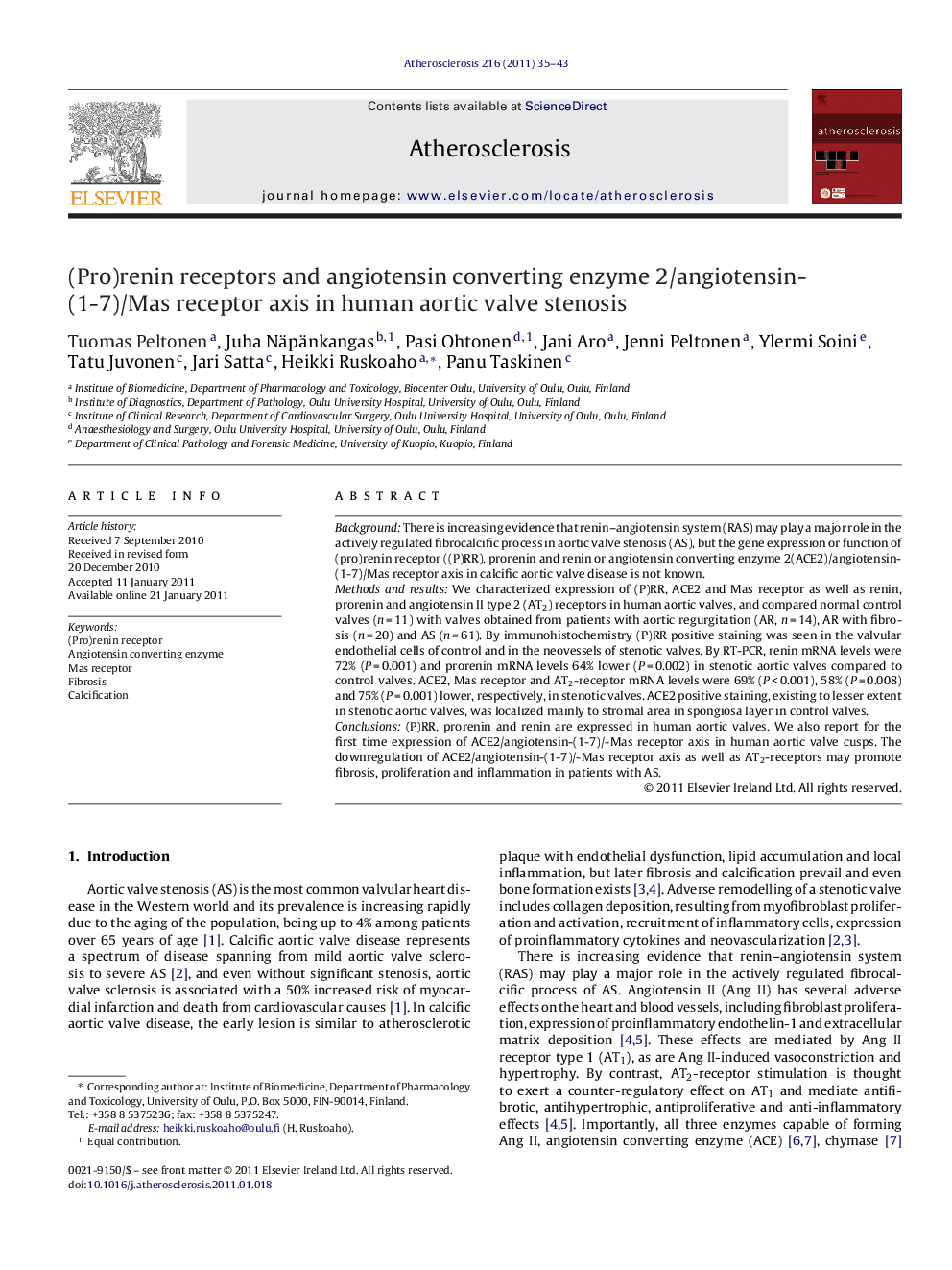| Article ID | Journal | Published Year | Pages | File Type |
|---|---|---|---|---|
| 5949685 | Atherosclerosis | 2011 | 9 Pages |
BackgroundThere is increasing evidence that renin-angiotensin system (RAS) may play a major role in the actively regulated fibrocalcific process in aortic valve stenosis (AS), but the gene expression or function of (pro)renin receptor ((P)RR), prorenin and renin or angiotensin converting enzyme 2(ACE2)/angiotensin-(1-7)/Mas receptor axis in calcific aortic valve disease is not known.Methods and resultsWe characterized expression of (P)RR, ACE2 and Mas receptor as well as renin, prorenin and angiotensin II type 2 (AT2) receptors in human aortic valves, and compared normal control valves (n = 11) with valves obtained from patients with aortic regurgitation (AR, n = 14), AR with fibrosis (n = 20) and AS (n = 61). By immunohistochemistry (P)RR positive staining was seen in the valvular endothelial cells of control and in the neovessels of stenotic valves. By RT-PCR, renin mRNA levels were 72% (P = 0.001) and prorenin mRNA levels 64% lower (P = 0.002) in stenotic aortic valves compared to control valves. ACE2, Mas receptor and AT2-receptor mRNA levels were 69% (P < 0.001), 58% (P = 0.008) and 75% (P = 0.001) lower, respectively, in stenotic valves. ACE2 positive staining, existing to lesser extent in stenotic aortic valves, was localized mainly to stromal area in spongiosa layer in control valves.Conclusions(P)RR, prorenin and renin are expressed in human aortic valves. We also report for the first time expression of ACE2/angiotensin-(1-7)/-Mas receptor axis in human aortic valve cusps. The downregulation of ACE2/angiotensin-(1-7)/-Mas receptor axis as well as AT2-receptors may promote fibrosis, proliferation and inflammation in patients with AS.
